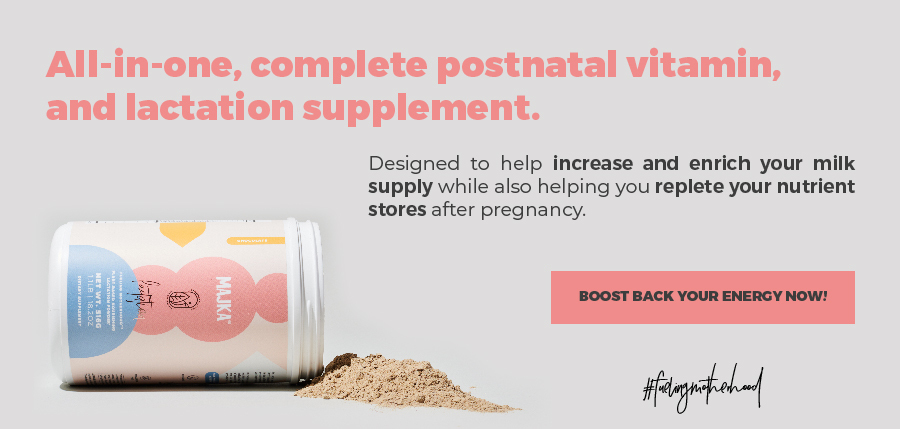
Sometimes new mommies cannot help but wonder if they are making enough milk to feed their baby, especially during the first weeks after delivery; low milk supply is not as common as it is perceived, but it can still become an issue during your lactation journey that can easily be avoided if you are frequently breastfeeding and pumping to increase milk supply.
So, how can extra feeding sessions help you produce more milk if your body is not making as much as you want? Well, remember that your milk supply works as an offer and demand system, so when your breasts have constant stimulation, it sends signals that more milk is needed and more is going to be generated. Although, for working mommies and women with a tight schedule, more breastfeeding sessions can seem complicated, so adding a breast pump into the equation might seem like a reasonable option.
If you are considering pumping to increase milk supply, know that it can bring results as good as breastfeeding does, and this might be a great option to give your baby the best nutrition through an exclusive breast milk diet during their first year. To help you, we have gathered some useful insights to keep in mind while pumping:
When to try pumping to increase milk supply
Before trying pumping to increase milk supply, have a conversation with your family doctor or lactation consultant to consider the real reasons that could be behind a drop or low supply, as it could be you are not breastfeeding or pumping properly and other adjustments on your routine might be everything you need.
If you are not sure your milk supply is low, ask yourself these questions:
- Is my baby peeing regularly?
- Are the stools looking and happening normally?
- Is my baby gaining weight?
If the answer to the three questions above is “yes”, your supply is most likely to be on the good side. Other baby behaviors like wanting more feedings or fussiness are not necessarily indicators of a low milk supply, but it is normal for new parents to confuse them as such.
If you’re a mommy of a preemie or the amount of time you spend with your baby is affected by your schedule–if you are going back to work, for example– pumping to increase milk supply might also be a good option to avoid drops.
Preparing to pump
Using a breast pump properly takes time and dedication, but it is worth the effort. Once you get it, opening the box can easily feel overwhelming, but setting up your pump is not really hard. Just follow these tips that can help you:
- Follow the instructions of use: This might seem obvious but we strongly recommend you read the instruction manual to comprehend how to use it and store it safely. Take notes when doing so to keep the most important information handy and look for educational videos on YouTube or somewhere else to help you solve doubts.
- Sterilizing your breast pump: Before doing this step, confirm that your breast pump is dishwasher safe before placing any parts in yours; for most pumps, you will have to take the part out before the drying cycle to avoid warping them. You could also boil the parts of your breast pump in water for five minutes more or less, or use steam clean bags that can be put in the microwave. Make sure to let all parts air dry before putting them together or storing them. For more information, you can look at the CDC Guidelines on this topic.
- Plan ahead: The breast pump is just one thing you’ll need during this process, so make sure to keep handy accessories like nursing pads, a breast pump bag, a pumping bra – which can be different than a nursing bra and so helpful, nipple cream, a nursing pillow, and other products to express milk easily and comfy.
Every learning process takes time, so try to be patient through it and talk to your lactation consultant whenever any doubts come, as they have all the information you need and the best advice according to your case.
Flange size and pump settings.
Pumping should be comfortable and should not hurt or be painful in any way. Sometimes the sensation of the pump takes some getting used to, but it should not be painful. If it is: flange sizing and pump settings can be crucial to increasing milk supply with a pump.
It is really important to know that not all flange sizes that come in the box fit everyone. Everyone should get their flange sized to make sure it is comfortable and has optimal milk removal ability. There are online flange fitting options with lactation consultants and often with the pump company itself.
Most pumps can be adjusted in its own way throughout the pump session to optimize milk removal, this includes cycle speeds and vacuum levels. Many people do not know the optimal pump settings for their pump, so finding out prior to pumping is very important.
Other pumping tips
Once you have set everything up, it’s time to start using your pump. Generally, pumping is as easy as placing the shield on your nipple and turning it on–or squeezing the mechanism if it is manual. However, these tips might be good to keep in mind during your pumping process:
- Be patient, it can take several minutes for your milk to begin to flow.
- Find a comfortable place to pump.
- Massage your breasts before and after pumping to help bring the flow.
- To enhance the let-down, apply a warm compress on your breasts.
- Relax and try to keep away from distractions.
- Put your shoulders back and find support for your arms.
- Fix a pumping schedule to help your body produce more milk as demand increases.
- If you are away from your baby, look at pictures or videos of them, as this can help produce milk.
- Follow the CDC Guidelines for proper storage of your milk.
Don’t get discouraged at first if you have been breastfeeding and then transition to partial or exclusive pumping and don’t get much milk per session, as this is expected to happen and it is perfectly normal. As there are different breastfeeding techniques, you can experiment with different pumping styles to see which gives you the best results. Also, be sure to follow all our content at Breastfeeding 101, and click on the resources that made this article possible if you want more information on how to use pumping to increase milk supply:
How to Pump More Breast Milk (Ultimate Guide) | Mom Loves Best
Pump Early, Pump Often: A Continuous Quality Improvement Project | NIH
10 Ways to Increase Breast Milk Supply When Pumping | Healthline
To Pump or not to Pump? Real Talk on Breast Pumping | Seattle’s Child
How to increase your milk supply | La Leche League GB
Annie Rueb






